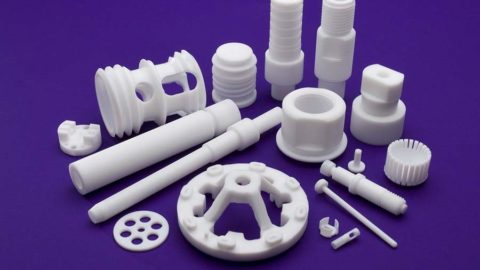
Một số linh kiện máy móc làm từ nhực PTFE
TPM is a systematic approach that makes manufacturing processes more efficient by engaging all employees in the company including operators, management and maintenance staff. Below is a case study for the successful application of TPM in a PTFE resin factory.
PTFE resins are usually in sheet, tree form with high strength properties, are non-conductive, do not ignite and resist abrasion. Waterproof, smooth surface makes cleaning easy. On the other hand, PTFE products are also manufactured in the form of machine components with high precision through 3D printing method. Therefore, maintenance of overall equipment performance is essential at the factory.
To improve performance, consultants have proposed an improvement plan around equipment performance metrics (OEE). OEE consists of three components, namely availability, performance and quality ratio. The OEE of each machine is a dependent variable describing the efficiency of each process, affected by 6 large losses (unplanned stop, setup and adjustment, small stop, low speed running, product failure and error due to boot).
Usually the application of self-governing maintenance pillars is accomplished through 7 main steps: Initial cleaning, eliminating sources of contamination and difficult to reach areas, setting inspection and cleaning standards, advancing conduct equipment testing and training, conduct general process checks, systematize self-managed maintenance, and continually improve by self-managed maintenance. Because of the limited time, the researcher spent three months doing the study and the steps for AM implementation have been simplified. AM operations involve restoring the condition of the equipment that has been replaced by selecting a machine with better conditions. After that, AM activities will be managed continuously in daily production.
The study includes the following phases:
Machine and process selection: Researchers and managers have selected the best machines and processes based on a review of machine profiles, to see if all machine components are working properly in the Time ago no. There are three CNC machines from the CNC Workshop, one group from the Workshop, one group from the Model Workshop selected.
Machine condition assessment: Researcher and participant conduct equipment condition assessment using the sample form. Operator will clean and lubricate the equipment based on the condition ratings.
The above two phases can be considered the cornerstone stage in the improvement plan implementation.
(To be continued)
Productivity and Quality Office